Using Math Flash Cards to Teach Various Concepts
Math flash cards are great tools for teaching concepts ranging from basic to more complex arithmetic. Here I will outline ways to use them effectively.
My son loves cards. I think it’s safe to that say he has spent hundreds if not thousands of hours flipping through stacks of cards. This made flash cards a no-brainer choice for teaching him both reading and math.
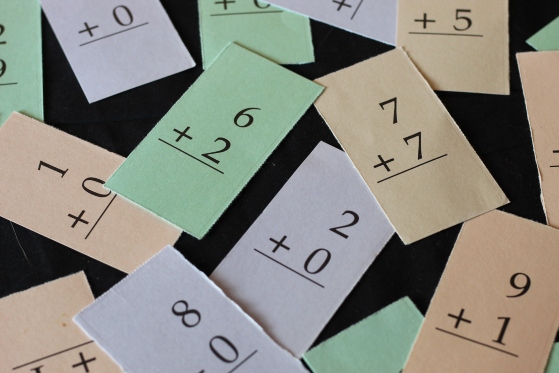
Number Recognition and Counting
You don’t have to spend your hard-earned money on pre-printed cards.
What I did was very simple and inexpensive. I bought a package of 3” x 5”
index cards and wrote one number on each card with a magic marker.
And he loved them.
I first gave him 11 cards with the numbers 0 through 10. After he learned those, I gave him ten more cards marked with 11 through 20. Slowly we worked our way to 100. I gave him only ten or eleven cards at a time to avoid overwhelming him.
I spent quite a bit of time reviewing these cards with him. I flipped through each card in order, saying the name of each number. In this way he learned to count and to recognize the numbers.
And all the time he spent flipping though them on his own gave him even more review.
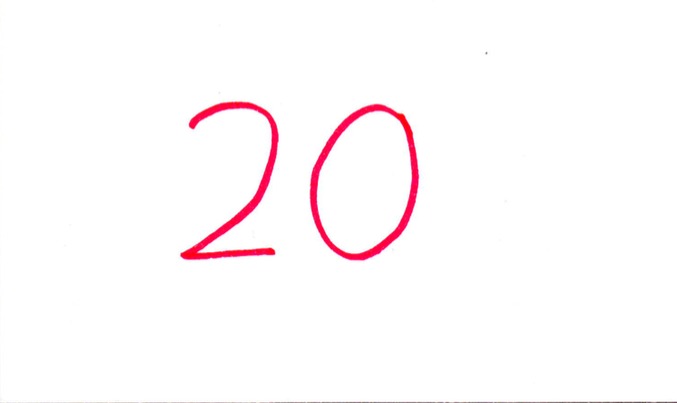 Red is often a favorite color with children. It brightens up just about everything. Red is often a favorite color with children. It brightens up just about everything. |
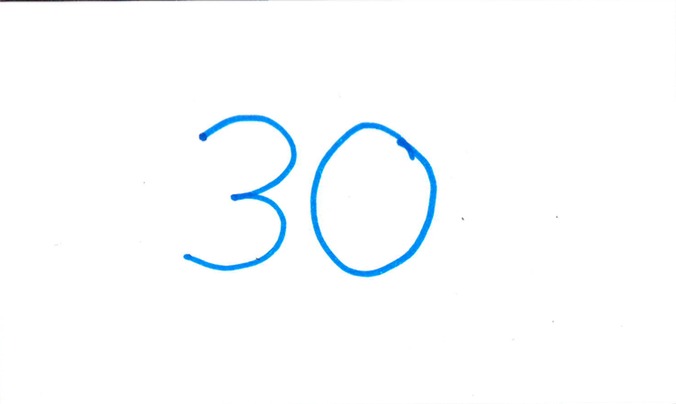 Use various colors on your cards to create more interest. Use various colors on your cards to create more interest. |
Shapes
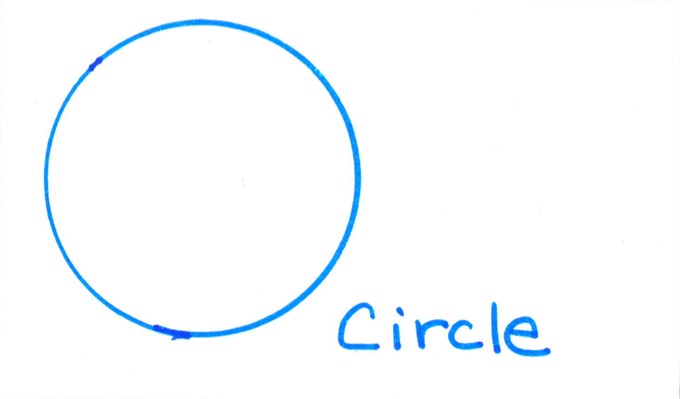 You can make these cards with or without labels. Many children will need both.
You can make these cards with or without labels. Many children will need both.Would you like to guess how my son learned his shapes?
Again, all we needed were some index cards and magic markers. I included the basic shapes: square, rectangle, circle, and triangle.
But I figured, why stop there? I could make cards for the star, parallelogram, rhombus (or diamond), hexagon, octagon, right triangle, equilateral triangle, and obtuse triangle.
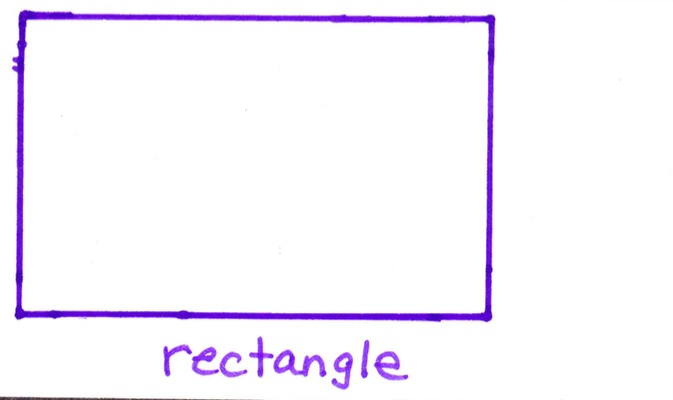 My son loved these cards and did not care that they were not perfect.
My son loved these cards and did not care that they were not perfect.I also included the right angle, acute angle, and obtuse angle even though they aren’t really shapes.
You may think learning all those shapes was overwhelming for him, but it really wasn't. He loved looking at his cards, and had no problem learning the shapes. The key was finding a learning material that he enjoyed.
But in this world, all is not perfect. For some reason, the very
sight of the angles freaked him out, and he would get all upset.
It
could be that he was used to the blue marker I had used for all the
shape cards, and the red I had chosen for the angle cards got him upset.
Perhaps in his mind they were supposed to be blue.
I mention this to make the point that it pays to observe closely what could be upsetting your child. The answer to the problem may be as simple as changing the color.
The cards I'm showing here have labels, which can be helpful for a while, especially if your child is learning to read. But you may need to eventually make new cards without labels. If you don't, they may come to think it's only a rectangle if the word "rectangle" is written on the card. Removing the label will help them to generalize these concepts and to recognize them with or without the labels.
And of course, generalizing their knowledge of the shapes will also involve pointing out rectangles, squares, triangles, etc. on concrete, everyday objects around you such as blocks or buildings.
Math Facts
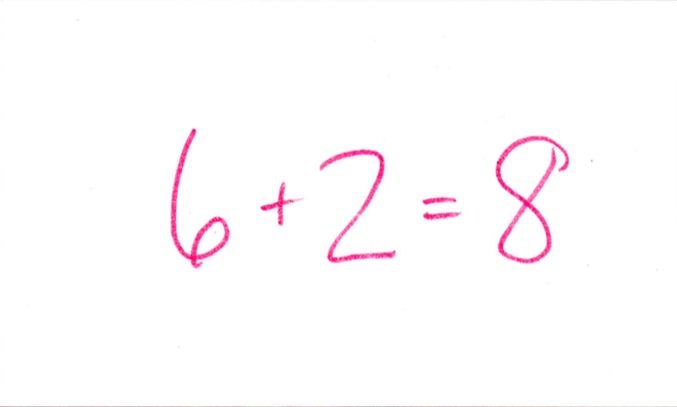 |
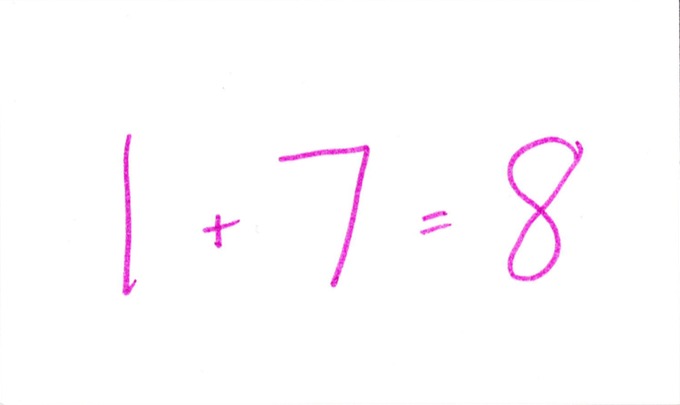 |
It’s been a long time. But I think I can remember using flash cards to learn math facts. Maybe you did, too. Cards are ideal for this task.
Math flash cards make it easy to review math equations with your child.
I think it’s best to take it one series at a time rather than overwhelming them with a large stack of math facts all at once.
You could make cards for the zeros first: 0+0=0, 0+1=1, 0+2=2, and so on. Once they’ve learned those, you could give them the ones: 1+0=1, 1+1=2, 1+2=3, all the way to 1+10=11.
Most children memorize all their facts through the tens, but in some cases, they may learn the elevens and twelves.
Once they learn the addition facts, you can follow the same procedure for subtraction, multiplication and division facts. Start with the zeros and teach 10 to 12 equations at a time.

You can choose to write the equations with or without the answers.
If they are verbal and you want to keep track of how well they are learning their facts, you can leave off the answers. Then you can test them by holding each one up to see if they can remember the answer.
Or, they could test themselves if they are at that level. You may find it helpful to write the answer on the back side of the math flash cards so you can know right away if they got it right. Or they can check their own answers if they are testing themselves.
On the other hand, if your child is nonverbal, or if they are first learning the equations, you’ll likely want to include the answers. That way, you can read and review entire equations repeatedly with them.
But a nonverbal child obviously wouldn’t be able to tell you the answers as you hold up the flash cards. How then do you test their knowledge of the math facts?
You can call out the equation, have them write or type the equation, and then see if they can write or type the correct answer.
You can also give them a choice between two or three answers and let them choose the answer.
Math Flash Cards are Simple Tools and Easy to Use
Math flash cards are very versatile. If your child ever learns higher math, you can use cards for more complex arithmetic, such as square roots.
Of course, this is just one method for teaching math. It’s a good idea to find a variety of ways to present these concepts.
If you would rather print them out, click here for a good source for free printable math flash cards.



New! Comments
Have your say about what you just read! Leave me a comment in the box below.